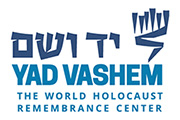When I looked into the mirror I was totally shocked. I hadn’t seen myself in a mirror for years. I remembered the face of a child, and suddenly I was no longer a child. (Interview with Tosia Schneider)
The physical and emotional condition of Jewish child survivors in the postwar period was mostly appalling. Many of the children had suffered recurring trauma throughout the war, as they had witnessed or experienced violence, severe deprivation, hunger, physical abuse, and, moreover, had mourned the loss of parents, other family members, and friends. After the war, these young children faced the grueling task of confronting their losses while attempting to rehabilitate their lives and souls. Many expressed a lack of trust and suspicion toward others, particularly adults, as well as a crisis of faith in humanity. Some child survivors had even lost the capacity to feel and to express emotion, crippled by their wartime ordeals. However, children also demonstrated remarkable resilience and ingenuity in navigating their new reality. In this volume, a range of scholars examine the process of rehabilitation of child survivors of the Holocaust in the early postwar period in various European countries and in North America. These authors researched the most immediate and crucial issues, such as medical assistance provided to children suffering from physical and emotional illness, the return of Jewish children from non-Jewish families and institutions, and the placement of child survivors through adoption and other frameworks to ensure adequate accommodation and their wellbeing. This volume also traces the child survivors’ responses to their own suffering and loss. Starting Anew: The Rehabilitation of Child Survivors of the Holocaust in the Early Postwar Years offers important lessons for caregivers striving to restore hope and instill resilience in today’s innocent victims of war and violence.
